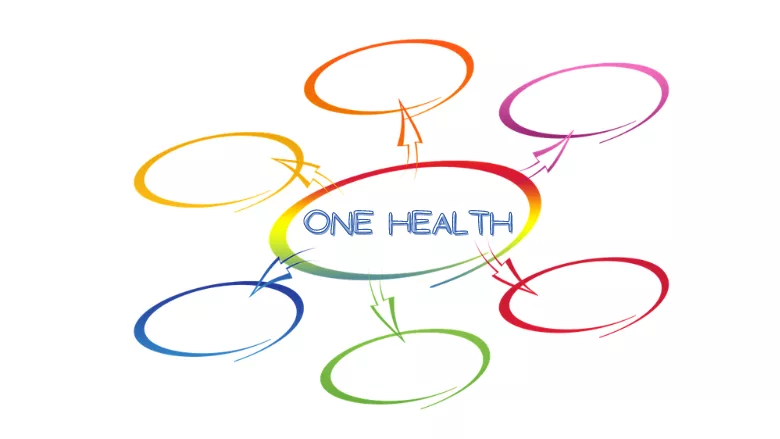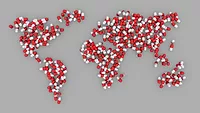International Organizations Develop One Health Action Plan, Food Safety is Key Component

Credit: geralt (geralt-9301) via Pixabay
Four international organizations are focusing on strengthening food safety as part of a One Health approach to human and environmental health. The Food and Agriculture of the United Nations (FAO), the World Health Organization (WHO), the United Nations Environment Program (UNEP), and the World Organization for Animal Health (WOAH) have launched the “One Health Joint Plan of Action (2022–2026)” to address issues such as zoonotic pandemics and antimicrobial resistance (AMR) through six interdependent action tracks, one of which is dedicated to food safety.
Understanding One Health
The One Health approach calls for a holistic and systems-based understanding of the interconnection between the health of humans, animals, plants, and the environment. Food safety risks can be understood through a One Health lens. For example, foodborne diseases are caused when microbial, chemical, or other toxic contaminants are ingested through food, and such contaminants can have various entry routes into food from the environment.
AMR, which the Plan of Action calls the leading cause of death around the world, is also an important food safety risk under a One Health perspective. The spread of resistant genes and pathogens has been accelerated by a number of environmental and social factors, such as the inappropriate use of antibiotics in agriculture. The Plan of Action states that AMR was associated with 4.95 million deaths in 2019 alone.
Strengthening Food Safety Through a One Health Lens
Action Track 4 of the Joint Plan of Action centers on strengthening the assessment, management, and communication of food safety risks. Ways in which food is produced may not only affect the safety of the final product, but also the health of animals, plants, and the environment; the affected health of animals, plants, and the environment may then circle back around and impact food safety.
The objective of Action Track 4 is to promote awareness, policy changes, and action coordination among stakeholders to ensure a healthy food supply chain that does not negatively affect humans, animals, and ecosystems. The action track builds on the “WHO Global Strategy for Food Safety 2022–2030” and aims to support the implementation of FAO and WHO food safety strategies under the One Health approach.
Action Track 4 is interdependent with the Joint Plan of Action’s other action tracks in the following ways: food and live animals are subject to contamination or infection from the environment (Action Track 6), foodborne bacteria are becoming more resistant to antimicrobials (Action Track 5), some foodborne illnesses are new and emerging (Action Track 2), and some foodborne illnesses are neglected (Action Track 3).
Looking for quick answers on food safety topics?
Try Ask FSM, our new smart AI search tool.
Ask FSM →
Actions to Strengthen Global Food Safety
Specific activities, deliverables, and timelines are outlined in Action Track 4. The first action is to strengthen the One Health approach in national food control systems and food safety coordination. This includes establishing or improving critical infrastructure and components of food control systems, such as: food safety legislation, standards, and guidelines; laboratory capacity; food control activities; and capacity for emergency preparedness and response. The four partner organizations of the Joint Plan of Action will assist countries by evaluating and improving key components that will help mitigate food safety hazards, ensure food authenticity, and enhance fair and safe trade in food.
The second action involves encouraging the utilization and improvement of food systems data and analysis, scientific evidence, and risk assessment in developing policy and making integrated risk management decisions. Several steps will be taken to achieve this goal: development of guidelines, technical support and training, enhancing countries’ abilities to identify and evaluate emerging food safety issues, and bolstering communication channels.
Finally, Action Track 4 includes fostering the adoption of the One Health approach in national foodborne disease surveillance systems, and in research for the detection and monitoring of foodborne illnesses and food contamination. The Joint Plan of Action suggests that the prioritization and mitigation of food safety risks will be difficult without knowing the incidence and burden of certain foodborne diseases and hazards. Strengthening integrated surveillance for foodborne pathogens and food contaminants as they relate to humans, animals, plants, and the environment will allow countries to detect, prevent, and respond to food safety incidents more effectively.
The four partner organizations will be supported by an implementation framework to generate impact in individual countries, and will engage with nongovernmental organizations, industry, academia, and other stakeholders to make progress on the Joint Plan of Action.








